Loading...
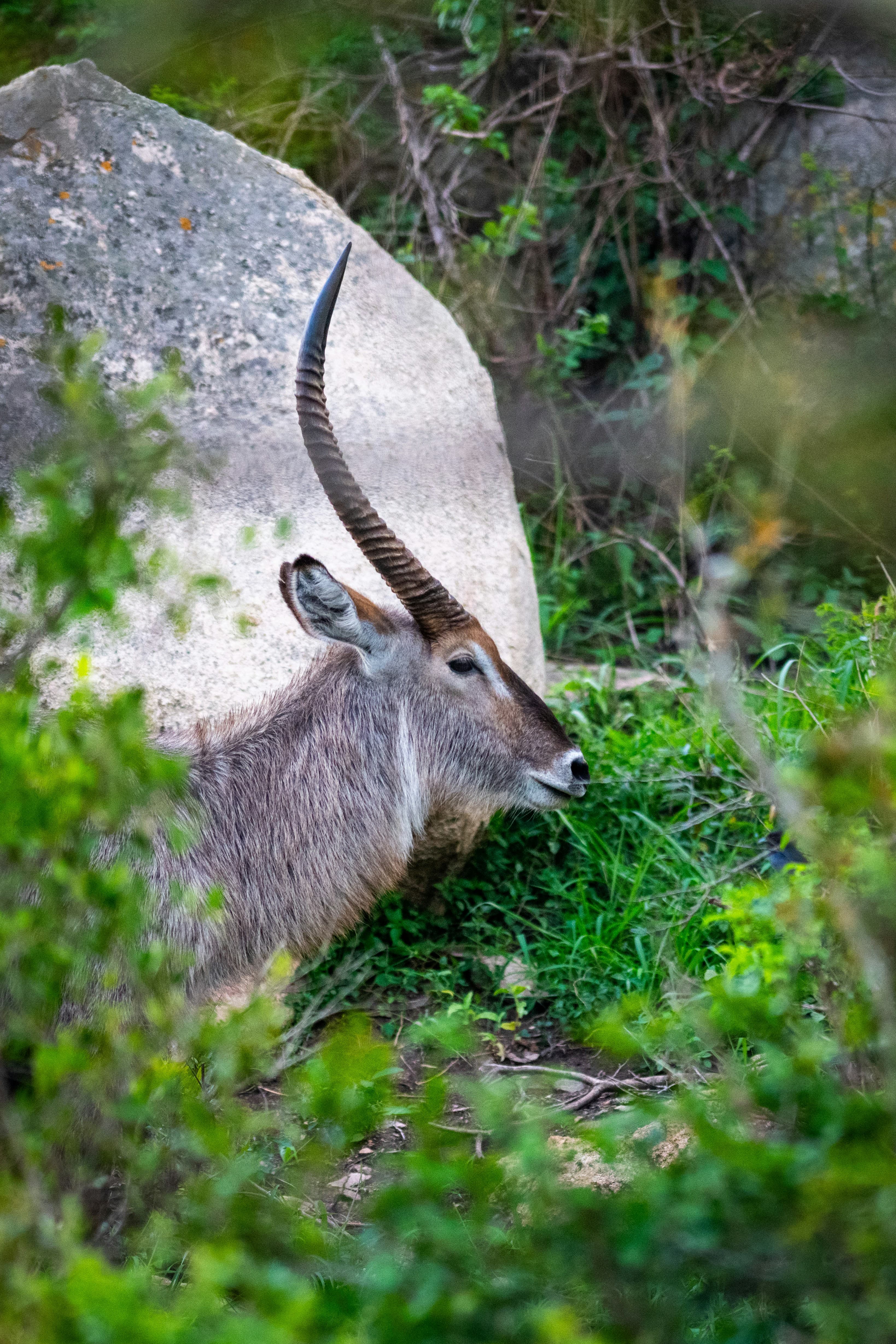
Kruger National Park Safari - 4 Days
Experience Africa's legendary Kruger National Park - one of the world's greatest wildlife sanctuaries - on this thrilling 4-day safari adventure. Track the Big Five across nearly 20,000 square kilomet...
Photo Gallery

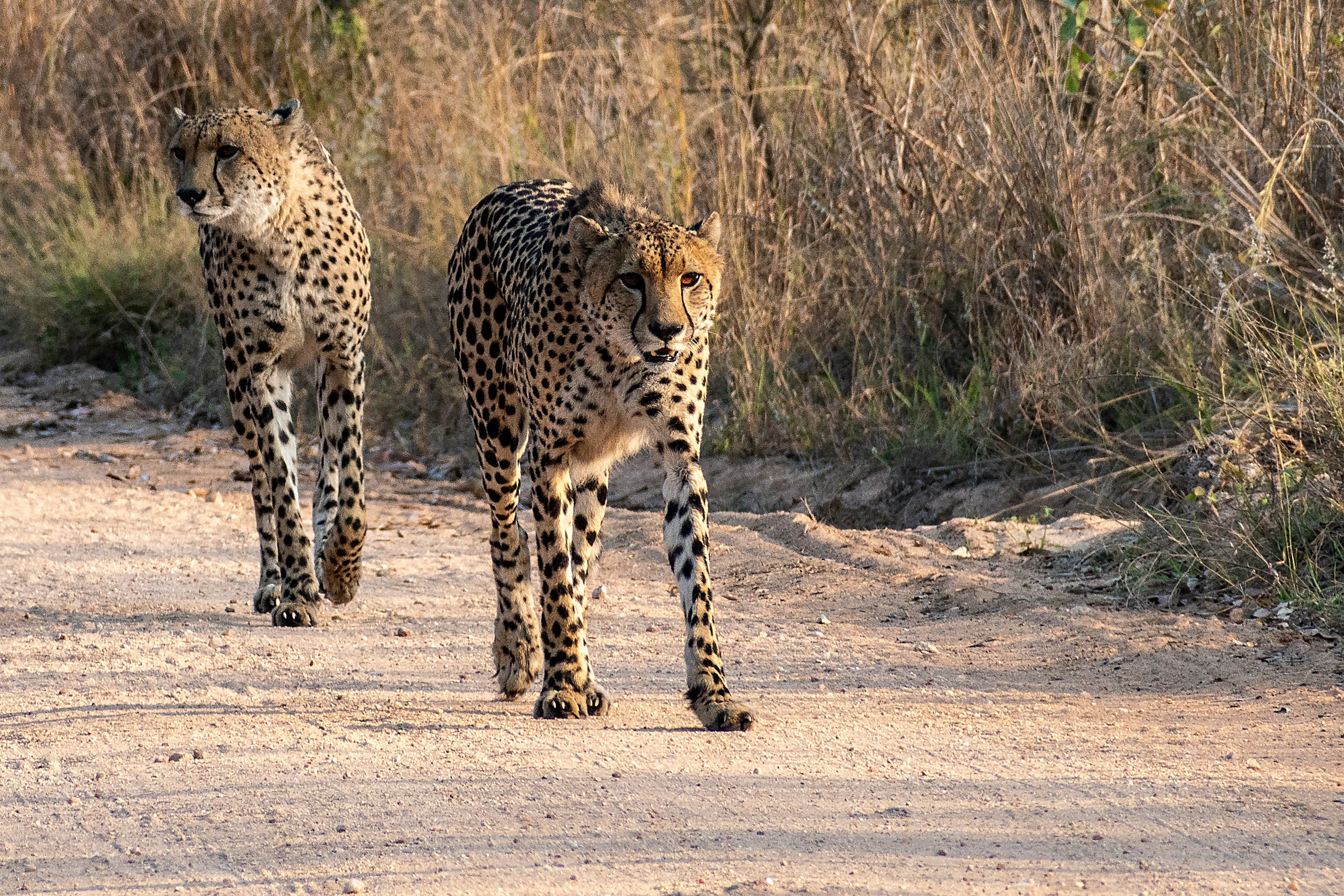
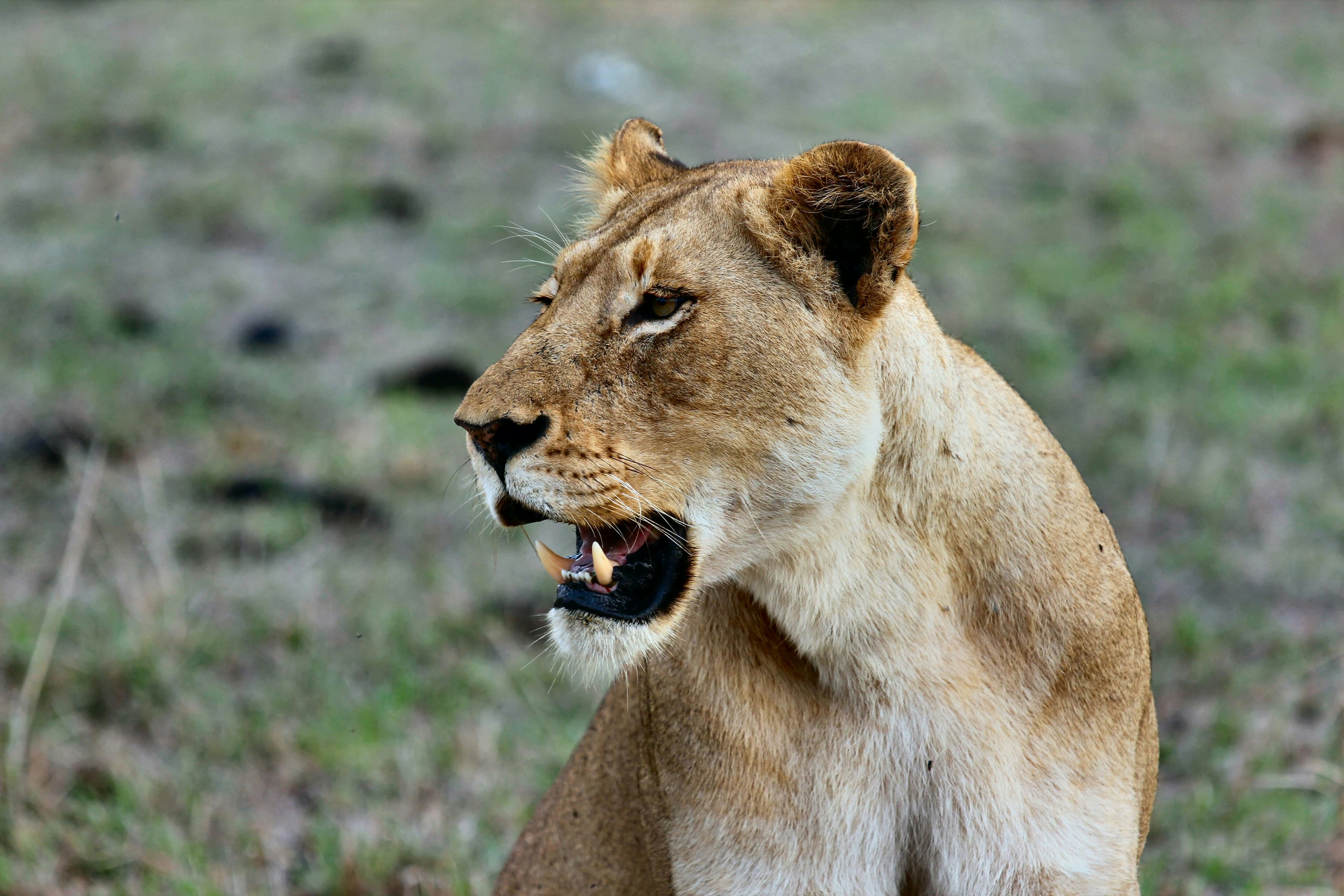
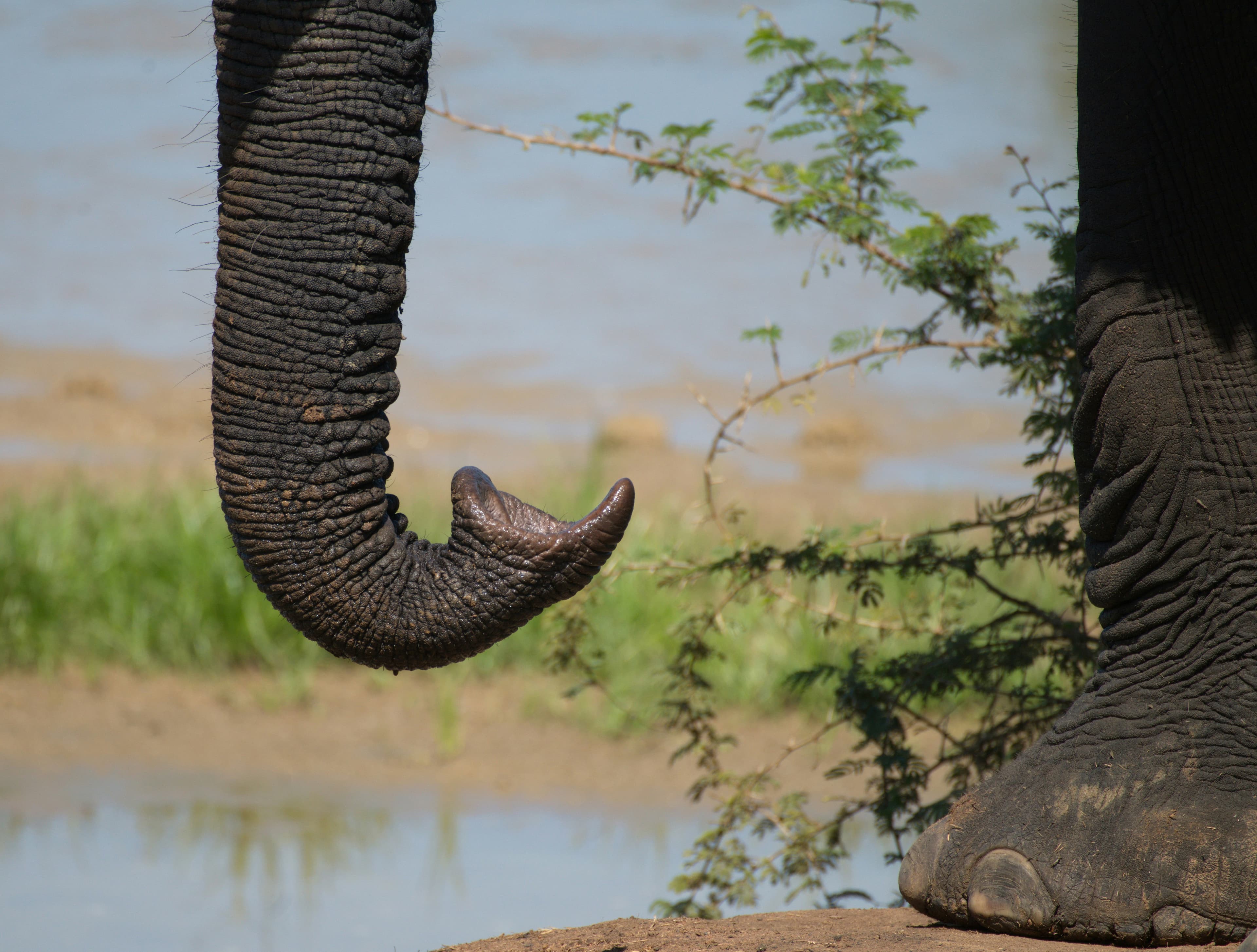
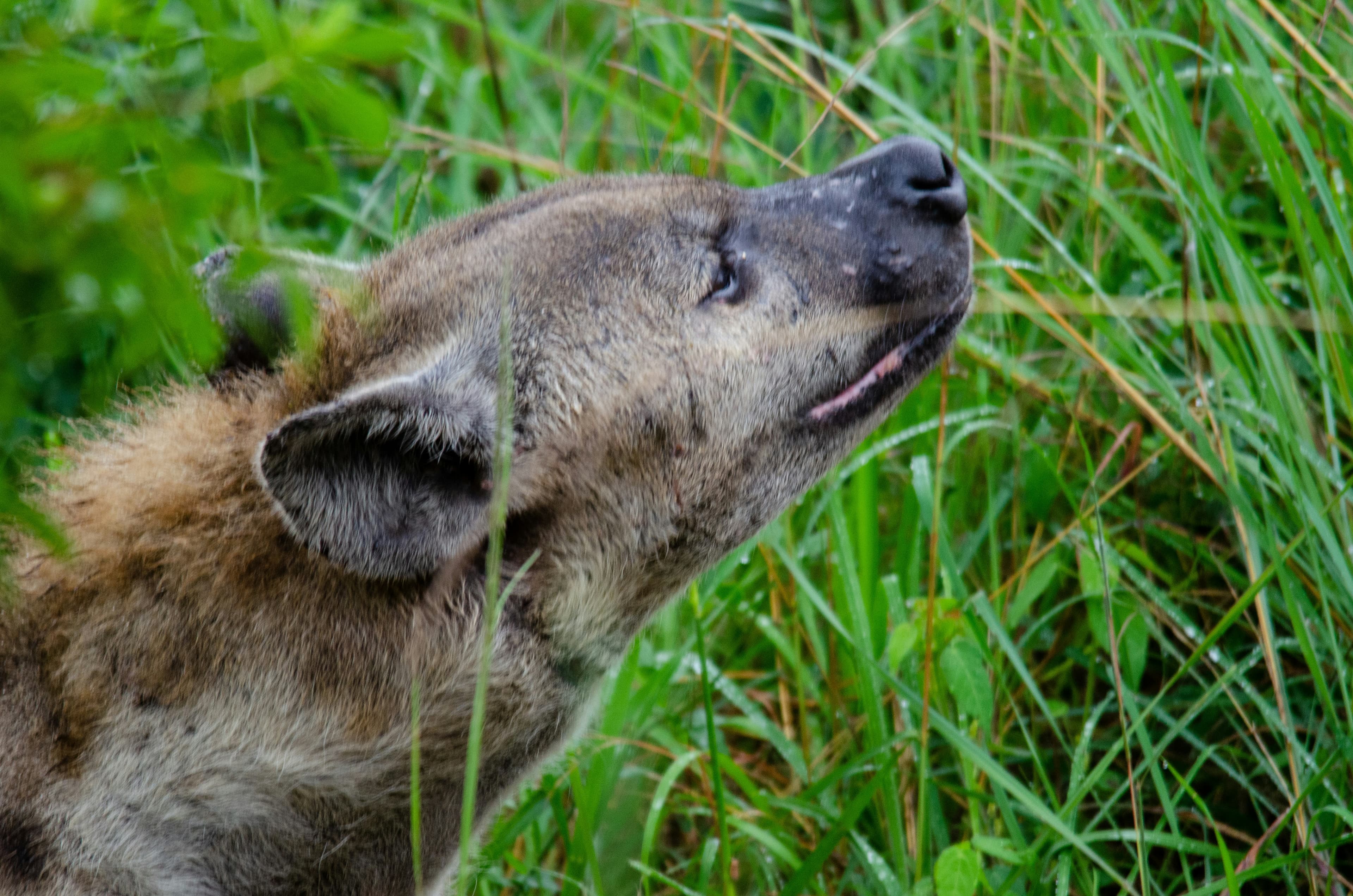
Tour Overview
Experience Africa's legendary Kruger National Park - one of the world's greatest wildlife sanctuaries - on this thrilling 4-day safari adventure. Track the Big Five across nearly 20,000 square kilometers of pristine wilderness, enjoy expert-led game drives at dawn and dusk when predators hunt, and stay in luxury lodges within or bordering the park. Kruger offers unparalleled wildlife density, excellent infrastructure, and consistent sightings year-round. The ultimate South African safari experience.
4-day Kruger National Park safari: Big Five viewing, luxury lodges, expert guides, sunrise/sunset game drives. South Africa's premier wildlife destination. 147 mammal species. Book your Kruger safari adventure!
Tour Highlights
Day-by-Day Itinerary
1Johannesburg to Kruger - Journey to the Bushveld
Your Kruger safari adventure begins with pickup from OR Tambo International Airport in Johannesburg or your Johannesburg hotel early morning (6:00-7:00 AM). OPTION A (Recommended): Fly from Johannesburg to Hoedspruit or Nelspruit (Kruger Mpumalanga International Airport) - 1 hour flight, then 1-1.5 hours scenic drive to your lodge. This saves time and adds aerial perspective. OPTION B: Road transfer from Johannesburg (5-6 hours, 450km) along the scenic Panorama Route. If driving, the route passes through beautiful Mpumalanga province with stops at God's Window (spectacular cliff-top viewpoint over Lowveld), Bourke's Luck Potholes (cylindrical rock formations carved by water), and Three Rondavels viewpoint overlooking Blyde River Canyon (world's third-largest canyon). The landscape transitions from highveld grasslands to subtropical lowveld bushveld. Arrive at your safari lodge (Sabi Sabi, Lion Sands, Timbavati, or similar luxury property) around midday for check-in and lunch. These lodges offer exceptional amenities: private decks, plunge pools, watering holes attracting wildlife, and five-star service. After settling in and comprehensive safari briefing (safety protocols, what to expect, best photography practices), depart around 4:00 PM for your first AFTERNOON/SUNSET GAME DRIVE in an open 4×4 safari vehicle. Kruger National Park is among Africa's premier wildlife destinations with exceptional biodiversity: 147 mammal species, 517 bird species, 114 reptile species. The southern and central regions (where most lodges are located) have highest wildlife densities. Your expert guide - often with 10-20+ years bush experience - uses tracking skills, animal behavior knowledge, and radio communication with other guides to locate quality sightings. Late afternoon is prime viewing time as temperatures cool and animals become active after midday heat. Search for the Big Five and other species: giraffes browsing acacia trees, zebra herds, impalas (Kruger has 150,000+), wildebeest, kudus with spiral horns, warthogs. Lions often become active hunting, leopards emerge from daytime hiding spots, elephants head to water. Stop at scenic location for SUNDOWNER DRINKS - sip South African wine or gin & tonic watching the spectacular African sunset paint the sky orange and pink. As darkness falls, your guide switches on spotlights revealing nocturnal species: bush babies, genets, civets, nightjars, and hopefully predators on the hunt. Return to lodge around 7:30 PM for shower, then gather around fire for pre-dinner drinks sharing safari stories. Enjoy excellent dinner (often boma-style under stars) before retiring to your luxury suite. Fall asleep to sounds of the African bush - perhaps a lion roaring in distance or hyenas whooping.
Lunch, DinnerLuxury safari lodge in/near Kruger National Park
Johannesburg to Kruger - Journey to the Bushveld
Your Kruger safari adventure begins with pickup from OR Tambo International Airport in Johannesburg or your Johannesburg hotel early morning (6:00-7:00 AM). OPTION A (Recommended): Fly from Johannesburg to Hoedspruit or Nelspruit (Kruger Mpumalanga International Airport) - 1 hour flight, then 1-1.5 hours scenic drive to your lodge. This saves time and adds aerial perspective. OPTION B: Road transfer from Johannesburg (5-6 hours, 450km) along the scenic Panorama Route. If driving, the route passes through beautiful Mpumalanga province with stops at God's Window (spectacular cliff-top viewpoint over Lowveld), Bourke's Luck Potholes (cylindrical rock formations carved by water), and Three Rondavels viewpoint overlooking Blyde River Canyon (world's third-largest canyon). The landscape transitions from highveld grasslands to subtropical lowveld bushveld. Arrive at your safari lodge (Sabi Sabi, Lion Sands, Timbavati, or similar luxury property) around midday for check-in and lunch. These lodges offer exceptional amenities: private decks, plunge pools, watering holes attracting wildlife, and five-star service. After settling in and comprehensive safari briefing (safety protocols, what to expect, best photography practices), depart around 4:00 PM for your first AFTERNOON/SUNSET GAME DRIVE in an open 4×4 safari vehicle. Kruger National Park is among Africa's premier wildlife destinations with exceptional biodiversity: 147 mammal species, 517 bird species, 114 reptile species. The southern and central regions (where most lodges are located) have highest wildlife densities. Your expert guide - often with 10-20+ years bush experience - uses tracking skills, animal behavior knowledge, and radio communication with other guides to locate quality sightings. Late afternoon is prime viewing time as temperatures cool and animals become active after midday heat. Search for the Big Five and other species: giraffes browsing acacia trees, zebra herds, impalas (Kruger has 150,000+), wildebeest, kudus with spiral horns, warthogs. Lions often become active hunting, leopards emerge from daytime hiding spots, elephants head to water. Stop at scenic location for SUNDOWNER DRINKS - sip South African wine or gin & tonic watching the spectacular African sunset paint the sky orange and pink. As darkness falls, your guide switches on spotlights revealing nocturnal species: bush babies, genets, civets, nightjars, and hopefully predators on the hunt. Return to lodge around 7:30 PM for shower, then gather around fire for pre-dinner drinks sharing safari stories. Enjoy excellent dinner (often boma-style under stars) before retiring to your luxury suite. Fall asleep to sounds of the African bush - perhaps a lion roaring in distance or hyenas whooping.
2Full Day Kruger - Dawn to Dusk Wildlife Viewing
WAKE-UP CALL at 5:00 AM - early starts are essential for safari! Quickly dress (layers recommended as mornings are cold, afternoons hot), grab coffee/tea and rusks (South African biscuits) at lodge reception, then depart 5:30 AM for SUNRISE GAME DRIVE - the absolute best wildlife viewing time. The bush awakens: predators are still active from night hunts, herbivores graze in cool morning air, and extraordinary morning light creates perfect photography conditions (golden hour magic). Your guide uses fresh tracks from overnight to locate predators: lion prides often lounging after kills, leopards descending from trees where they stashed prey overnight (leopards hoist kills into trees away from scavengers), cheetahs surveying from termite mounds. Kruger's southern sector around Skukuza, Berg-en-Dal, and Lower Sabie camps offers excellent Big Five viewing. The varied habitats - acacia savannah, mopane woodlands, riverine forests along Crocodile and Sabie Rivers - support diverse species. Visit watering holes where elephants drink, buffaloes wallow, hippos yawn, and crocodiles bask. Birdlife is spectacular: raptors (martial eagles, bateleurs, fish eagles), colorful lilac-breasted rollers, hornbills, kingfishers diving for fish, vultures circling kills. Your guide identifies species, explains behaviors, tracks animals, and positions the vehicle for optimal viewing and photography. Around 9:00 AM return to lodge for full breakfast - usually lavish buffet with eggs, meats, cereals, fruits, pastries. Mid-morning leisure time (9:30 AM - 3:30 PM): relax by pool, nap (safari fatigue is real!), book spa treatment, sit on deck watching wildlife at lodge waterhole (elephants, nyalas, warthogs frequently visit), read, or process photos. Many luxury lodges have hides (underground viewing bunkers) at water level for intimate wildlife encounters. Optional: Book guided BUSH WALK ($40, typically 2-3 hours mid-morning) with armed ranger learning tracking, identifying plants, seeing smaller creatures often missed in vehicles, and experiencing bush on foot (adrenaline rush!). Light lunch around 1:00 PM. At 3:30-4:00 PM, enjoy afternoon tea/coffee and snacks before departing for second game drive. Afternoon drive (4:00 PM - 7:00 PM) follows similar pattern: searching for Big Five, tracking any morning sightings that may still be in area (lions don't move far daily), visiting different habitats. Evening game viewing intensifies as nocturnal animals emerge. Sundowner stop at scenic location. Spotlight reveals the nightlife: scrub hares, springhares, porcupines waddling, thick-tailed bush babies leaping, chameleons on branches, and predators hunting - witnessing a lion hunt is thrilling! Return to lodge for dinner, perhaps traditional South African braai (barbecue) with boerewors (sausage), steaks, pap (maize porridge), and chakalaka (spicy vegetable relish). Sleep deeply after full day of adventure.
Breakfast, Lunch, DinnerLuxury safari lodge in/near Kruger National Park
Full Day Kruger - Dawn to Dusk Wildlife Viewing
WAKE-UP CALL at 5:00 AM - early starts are essential for safari! Quickly dress (layers recommended as mornings are cold, afternoons hot), grab coffee/tea and rusks (South African biscuits) at lodge reception, then depart 5:30 AM for SUNRISE GAME DRIVE - the absolute best wildlife viewing time. The bush awakens: predators are still active from night hunts, herbivores graze in cool morning air, and extraordinary morning light creates perfect photography conditions (golden hour magic). Your guide uses fresh tracks from overnight to locate predators: lion prides often lounging after kills, leopards descending from trees where they stashed prey overnight (leopards hoist kills into trees away from scavengers), cheetahs surveying from termite mounds. Kruger's southern sector around Skukuza, Berg-en-Dal, and Lower Sabie camps offers excellent Big Five viewing. The varied habitats - acacia savannah, mopane woodlands, riverine forests along Crocodile and Sabie Rivers - support diverse species. Visit watering holes where elephants drink, buffaloes wallow, hippos yawn, and crocodiles bask. Birdlife is spectacular: raptors (martial eagles, bateleurs, fish eagles), colorful lilac-breasted rollers, hornbills, kingfishers diving for fish, vultures circling kills. Your guide identifies species, explains behaviors, tracks animals, and positions the vehicle for optimal viewing and photography. Around 9:00 AM return to lodge for full breakfast - usually lavish buffet with eggs, meats, cereals, fruits, pastries. Mid-morning leisure time (9:30 AM - 3:30 PM): relax by pool, nap (safari fatigue is real!), book spa treatment, sit on deck watching wildlife at lodge waterhole (elephants, nyalas, warthogs frequently visit), read, or process photos. Many luxury lodges have hides (underground viewing bunkers) at water level for intimate wildlife encounters. Optional: Book guided BUSH WALK ($40, typically 2-3 hours mid-morning) with armed ranger learning tracking, identifying plants, seeing smaller creatures often missed in vehicles, and experiencing bush on foot (adrenaline rush!). Light lunch around 1:00 PM. At 3:30-4:00 PM, enjoy afternoon tea/coffee and snacks before departing for second game drive. Afternoon drive (4:00 PM - 7:00 PM) follows similar pattern: searching for Big Five, tracking any morning sightings that may still be in area (lions don't move far daily), visiting different habitats. Evening game viewing intensifies as nocturnal animals emerge. Sundowner stop at scenic location. Spotlight reveals the nightlife: scrub hares, springhares, porcupines waddling, thick-tailed bush babies leaping, chameleons on branches, and predators hunting - witnessing a lion hunt is thrilling! Return to lodge for dinner, perhaps traditional South African braai (barbecue) with boerewors (sausage), steaks, pap (maize porridge), and chakalaka (spicy vegetable relish). Sleep deeply after full day of adventure.
3Full Day Kruger - Exploring Different Regions
Another 5:00 AM wake-up for sunrise game drive exploring different areas of Kruger than yesterday. Kruger's vast size (19,485 sq km - larger than Israel!) means endless exploration possibilities. Your guide may focus on specific areas known for particular species or where recent sightings occurred. SOUTHERN KRUGER (if staying near Berg-en-Dal, Skukuza, Lower Sabie): Excellent for rhinos (white and black), wild dogs (endangered and rare), cheetahs on open plains. The granite kopjes (rocky outcrops) provide leopard lookouts. CENTRAL KRUGER (Satara, Orpen area): Lions and general game viewing, vast open plains good for cheetahs. NORTHERN KRUGER (Letaba, Mopani, Punda Maria): More remote with fewer tourists, excellent elephants, unique species like roan antelope, eland. Morning drive priorities: locating Big Five you haven't seen yet (many visitors see all Big Five in 2-3 days at Kruger), finding predator-prey interactions (hunt or kill scenes), exploring new habitats. Kruger has 6 major ecosystems creating habitat diversity supporting 147 mammal species - more than any other African park. Return to lodge for breakfast and mid-day leisure. Afternoon game drive (4:00 PM onwards) continues wildlife exploration. By Day 3, you've developed safari eyes - spotting movement, recognizing shapes, anticipating animal behavior. Your guide shares fascinating ecology: how termite mounds shape landscapes, why elephants strip bark (minerals and fiber), predator-prey dynamics, bird symbiosis with large mammals. Kruger isn't just about Big Five - it's understanding complex ecosystems. Watch for special moments: elephant families tenderly interacting, impala rams battling for territory, hippos emerging from water at dusk to graze overnight, hyenas at kills displaying dominance hierarchy. Sundowners offer time to reflect on incredible sightings over past days. Evening drive under spotlight might reveal leopards hunting, lions on kills, hyenas scavenging, or elusive species like servals, honey badgers, African wild cats. Return to lodge for final Kruger dinner celebrating your safari. Many lodges offer special bush dinners under stars with traditional entertainment.
Breakfast, Lunch, DinnerLuxury safari lodge in/near Kruger National Park
Full Day Kruger - Exploring Different Regions
Another 5:00 AM wake-up for sunrise game drive exploring different areas of Kruger than yesterday. Kruger's vast size (19,485 sq km - larger than Israel!) means endless exploration possibilities. Your guide may focus on specific areas known for particular species or where recent sightings occurred. SOUTHERN KRUGER (if staying near Berg-en-Dal, Skukuza, Lower Sabie): Excellent for rhinos (white and black), wild dogs (endangered and rare), cheetahs on open plains. The granite kopjes (rocky outcrops) provide leopard lookouts. CENTRAL KRUGER (Satara, Orpen area): Lions and general game viewing, vast open plains good for cheetahs. NORTHERN KRUGER (Letaba, Mopani, Punda Maria): More remote with fewer tourists, excellent elephants, unique species like roan antelope, eland. Morning drive priorities: locating Big Five you haven't seen yet (many visitors see all Big Five in 2-3 days at Kruger), finding predator-prey interactions (hunt or kill scenes), exploring new habitats. Kruger has 6 major ecosystems creating habitat diversity supporting 147 mammal species - more than any other African park. Return to lodge for breakfast and mid-day leisure. Afternoon game drive (4:00 PM onwards) continues wildlife exploration. By Day 3, you've developed safari eyes - spotting movement, recognizing shapes, anticipating animal behavior. Your guide shares fascinating ecology: how termite mounds shape landscapes, why elephants strip bark (minerals and fiber), predator-prey dynamics, bird symbiosis with large mammals. Kruger isn't just about Big Five - it's understanding complex ecosystems. Watch for special moments: elephant families tenderly interacting, impala rams battling for territory, hippos emerging from water at dusk to graze overnight, hyenas at kills displaying dominance hierarchy. Sundowners offer time to reflect on incredible sightings over past days. Evening drive under spotlight might reveal leopards hunting, lions on kills, hyenas scavenging, or elusive species like servals, honey badgers, African wild cats. Return to lodge for final Kruger dinner celebrating your safari. Many lodges offer special bush dinners under stars with traditional entertainment.
4Final Morning Drive & Departure
Last 5:00 AM wake-up call for final sunrise game drive - savor these last hours in the bush. Often the final drive produces spectacular sightings - wildlife doesn't follow schedules! Search for any Big Five members not yet seen, revisit favorite spots, or simply enjoy the peaceful African morning. Your guide might take you to lesser-known areas for intimate final experience. Dawn chorus from hundreds of bird species creates magical soundtrack. Watch the sun rise painting acacia trees golden, giraffes silhouetted against pink sky - photography heaven! Return to lodge around 8:30-9:00 AM for leisurely breakfast and packing. Check-out typically 10:00-11:00 AM. Depart lodge with game viewing en route to park exit - the safari continues until the last moment! Begin return journey to Johannesburg (arriving mid-late afternoon if driving 5-6 hours) OR transfer to Hoedspruit/Nelspruit airport for short flight to Johannesburg (departures from 12:00 PM onwards). Drop-off at OR Tambo International Airport for evening flights (recommended departure 6:00 PM or later) or Johannesburg hotel. Your 4-day Kruger safari concludes with incredible memories: Big Five sightings, spectacular sunsets, expert guide insights, and deeper connection with African wilderness. Kruger often converts first-time safari-goers into lifelong enthusiasts. Extension options: Combine Kruger with Cape Town (2-hour flight for city/mountains/wine contrast), add Panorama Route exploration (Blyde River Canyon, waterfalls, hiking), extend to Mozambique beaches (3 hours east for Indian Ocean relaxation), or visit Victoria Falls (2-hour flight to Zimbabwe/Zambia) for comprehensive Southern Africa experience. Many travelers return to Kruger multiple times - each visit offers different sightings, seasons bring changes (wet season babies, dry season concentrated wildlife), and the bush always surprises.
BreakfastNone (end of tour)
Final Morning Drive & Departure
Last 5:00 AM wake-up call for final sunrise game drive - savor these last hours in the bush. Often the final drive produces spectacular sightings - wildlife doesn't follow schedules! Search for any Big Five members not yet seen, revisit favorite spots, or simply enjoy the peaceful African morning. Your guide might take you to lesser-known areas for intimate final experience. Dawn chorus from hundreds of bird species creates magical soundtrack. Watch the sun rise painting acacia trees golden, giraffes silhouetted against pink sky - photography heaven! Return to lodge around 8:30-9:00 AM for leisurely breakfast and packing. Check-out typically 10:00-11:00 AM. Depart lodge with game viewing en route to park exit - the safari continues until the last moment! Begin return journey to Johannesburg (arriving mid-late afternoon if driving 5-6 hours) OR transfer to Hoedspruit/Nelspruit airport for short flight to Johannesburg (departures from 12:00 PM onwards). Drop-off at OR Tambo International Airport for evening flights (recommended departure 6:00 PM or later) or Johannesburg hotel. Your 4-day Kruger safari concludes with incredible memories: Big Five sightings, spectacular sunsets, expert guide insights, and deeper connection with African wilderness. Kruger often converts first-time safari-goers into lifelong enthusiasts. Extension options: Combine Kruger with Cape Town (2-hour flight for city/mountains/wine contrast), add Panorama Route exploration (Blyde River Canyon, waterfalls, hiking), extend to Mozambique beaches (3 hours east for Indian Ocean relaxation), or visit Victoria Falls (2-hour flight to Zimbabwe/Zambia) for comprehensive Southern Africa experience. Many travelers return to Kruger multiple times - each visit offers different sightings, seasons bring changes (wet season babies, dry season concentrated wildlife), and the bush always surprises.
What's Included & Excluded
Included in Price
- Kruger National Park entrance fees
- Professional safari guide throughout
- Transport in open 4×4 safari vehicle
- 3 nights luxury safari lodge accommodation
- All meals (full board)
- 6 game drives (2 per full day, 1 on arrival/departure days)
- Tea/coffee on early morning drives
- Sundowner drinks during evening drives
- Bottled water throughout
- Johannesburg/Hoedspruit airport transfers
- Government conservation fees
Not Included
- International flights to South Africa
- Domestic flights (Johannesburg to Hoedspruit/Nelspruit optional)
- South Africa visa (many nationalities visa-free)
- Travel insurance
- Alcoholic beverages at lodge (except sundowners)
- Optional bush walks ($40 per person)
- Optional night drives in private reserves ($50)
- Tips for guide and lodge staff ($15-20 per day suggested)
- Personal expenses and curio purchases
- Spa treatments at lodges
Tour Requirements
- Valid passport with 6+ months validity
- South Africa visa (many nationalities visa-free up to 90 days)
- Travel insurance covering medical and evacuation
- Malaria prophylaxis recommended for Oct-Apr visits (consult doctor)
- Yellow fever vaccination if arriving from endemic country
- Good camera with telephoto lens (300mm+ recommended)
- Binoculars for wildlife viewing
- Neutral-colored clothing (khaki, olive, brown)
- Warm layers for early morning drives (winter: 5-10°C)
- Sun protection (hat, sunglasses, SPF 50+ sunscreen)
- Insect repellent with DEET
Frequently Asked Questions
Commonly asked questions about this tour
What are the chances of seeing the Big Five in Kruger?
Kruger offers EXCELLENT Big Five viewing with high probabilities on a 4-day safari: ELEPHANTS - 99% (Kruger has 17,000+ elephants, almost guaranteed), BUFFALOES - 95% (large herds, very common), LIONS - 85-90% (Kruger has 1,600+ lions, second-highest density in Africa after Tanzania's Serengeti), LEOPARDS - 60-70% (over 1,000 leopards but elusive and nocturnal, early morning/evening drives improve odds), RHINOS - 70-80% (Kruger protects both white and black rhinos, southern sector best). Seeing ALL Big Five in 3-4 days is realistic (70-80% probability). Even if you miss one (usually leopard), the sheer wildlife diversity - wild dogs, cheetahs, hyenas, giraffes, hippos, countless antelope - ensures spectacular safari regardless.
How does Kruger compare to East African parks like Serengeti or Maasai Mara?
KRUGER ADVANTAGES: Better infrastructure (tarred roads, excellent lodges, reliable vehicles), year-round malaria-free winter (May-Sep), lower costs than premium East African lodges, less crowded (vehicle limits enforced), self-drive possible (unique to Kruger), closer to major city (Johannesburg), consistent wildlife year-round (no migration dependency). EAST AFRICA ADVANTAGES: Great Migration spectacle (Serengeti/Mara July-Oct), larger predator concentrations during migration, more "wild" feeling, hot air balloon safaris common, different species (Maasai giraffes vs Kruger's southern giraffes). WILDLIFE DENSITY: Serengeti/Mara higher during migration; Kruger higher year-round consistency. VERDICT: Both world-class. Kruger better for first-timers, families, comfort-seekers, self-drivers. Serengeti/Mara better for migration specifically, photographers wanting dramatic scenes. Many serious safari enthusiasts visit both - they offer complementary experiences.
Is Kruger safe? What about malaria?
SAFETY: Kruger is very safe for tourists. Stay in vehicle during game drives (dangerous animals present - lions, elephants, hippos, buffalo kill more people than any African animal if approached on foot), follow guide instructions, keep lodge doors/windows closed at night (animals roam freely), don't walk between buildings after dark without escort. Lodges have security protocols. Crime against tourists is rare. MALARIA: Kruger is a MALARIA AREA (low risk). HOWEVER: May-September (winter/dry season) is virtually malaria-free due to cold nights killing mosquitoes - many travelers skip prophylaxis for winter visits. October-April (summer/wet season) has malaria risk - prophylaxis strongly recommended (Malarone, doxycycline, or Atovaquone-Proguanil). Consult travel doctor 4-6 weeks before trip. Use insect repellent always, wear long sleeves/pants at dusk/dawn, sleep under nets if provided. The risk is low-moderate, easily mitigated with precautions.
Should I do a self-drive safari or guided safari in Kruger?
GUIDED SAFARI (This Tour): Advantages - Expert guides locate animals using radio networks and tracking skills (you see 3-5x more wildlife), Open 4×4 vehicles give better visibility and photography, Guides explain behaviors/ecology (educational), Luxury lodges inside/bordering park (prime locations, watering holes), Off-road permitted in private concessions, Early starts/late finishes maximize sightings, No driving fatigue, Sundowner drinks/bush dinners. Disadvantages - Higher cost ($600-800/day vs self-drive $100-150/day). SELF-DRIVE: Advantages - Much cheaper (park entry $25/day, rest camps $100-150/night), Flexibility (go at your pace), Adventure appeal (you control route). Disadvantages - Confined to tarred/designated roads (can't off-road), Must exit park by 6:30 PM (miss prime evening viewing), Slower animal locating without radio network, Harder spotting from sedan vs high safari vehicle, Lack of expert interpretation. VERDICT: Guided safari vastly superior for wildlife viewing, first-timers, limited time. Self-drive good for budget travelers, multiple visits (explore gradually), those enjoying the driving experience itself.
What should I pack for a Kruger safari?
CLOTHING: Neutral colors (khaki, olive, brown, beige - avoid bright colors/white), Long-sleeved shirts and long pants (sun/insect protection), Warm fleece jacket (early morning drives 5-10°C in winter), Light rain jacket (summer), Wide-brimmed hat, Comfortable closed-toe shoes (sandals for lodge). GEAR: Good camera with telephoto lens (300-600mm ideal for wildlife), Extra batteries and memory cards (thousands of photos!), Binoculars (8×42 or 10×42), Sunglasses (UV protection), Sunscreen SPF 50+ (reapply during drives), Insect repellent with 30%+ DEET, Headlamp/flashlight, Daypack for camera gear. OPTIONAL: Beanbag for camera stabilization, Spare camera body, Guidebooks (birds, mammals), Notebook for wildlife checklist. DON'T BRING: Camouflage clothing (illegal in South Africa - military association), Drones (prohibited in national parks), Excessive luggage (bush flights have 15kg limits). Lodges provide laundry service. Pack layers - mornings cold, afternoons hot (20°C+ variation).
When is the best time to visit Kruger National Park?
BEST OVERALL (DRY SEASON): MAY-SEPTEMBER - Winter/dry season offers: Easier wildlife viewing (animals concentrate at water sources, sparse vegetation improves visibility), Cooler comfortable weather (15-25°C), Virtually malaria-free (mosquitoes die in cold), Clear skies (better photography), Lower humidity. CONS: Colder early mornings (5°C possible, need warm layers), More tourists (peak season). WET SEASON: OCTOBER-APRIL (Summer) - Advantages: Lush green landscapes (beautiful), Baby animals born (impala lambs Dec-Jan, other species throughout summer), Migratory birds present (birding peak), Fewer tourists, Cheaper accommodation. CONS: Hot/humid (30-40°C), Dense vegetation hides animals, Malaria risk higher, Afternoon thunderstorms (dramatic but can interrupt drives). SHOULDER SEASONS: April and October balance both seasons' advantages. VERDICT: May-September best for first-timers prioritizing wildlife viewing; November-March excellent for photographers wanting dramatic skies and lush scenery. Kruger rewards visits any time - wildlife present year-round, each season offers unique experiences.
Can children participate in Kruger safaris?
Yes! Kruger safaris are excellent for families with children. CONSIDERATIONS: Most lodges accept children all ages, some luxury lodges have minimum age (often 6-12 years) due to open vehicle safety and long game drive durations. FAMILY-FRIENDLY FACTORS: Private rest camps have swimming pools, family cottages, enclosed areas where children can move freely, Children's game drive programs at some lodges, Shorter drive options, Educational value (seeing animals in wild beats any zoo!). CHALLENGES: Early wake-ups (5:00 AM) difficult for young children, Long periods sitting quietly in vehicles (3-4 hours), Must stay still when animals nearby (safety). TIPS: Book private vehicle for flexibility (bathroom breaks, shorter drives if children restless), Choose family-friendly lodges (ask about children's programs), Bring entertainment for lodge downtime (tablets, books), Involve kids in wildlife checklists/spotting games, Consider self-drive safari for more flexibility. Many families rate Kruger safari as life-changing educational experience for children. Ages 8+ typically engage best; younger children possible with right expectations and preparations.
What accommodation options exist in/around Kruger?
LUXURY LODGES (This Tour, $400-1,200/night): Sabi Sabi, Lion Sands, Singita, Ulusaba - Ultra-luxury with exceptional service, gourmet dining, private decks, plunge pools, outstanding guiding. Located in private reserves bordering Kruger (no fences, animals move freely) allowing off-road driving and walking safaris. All-inclusive pricing. MID-RANGE LODGES ($150-300/night): Protea Kruger Gate, Pestana Kruger, Kapama - Comfortable lodges outside park gates, good amenities, quality game drives. BUDGET OPTIONS: SANParks Rest Camps inside Kruger ($50-150/night) - Skukuza, Lower Sabie, Satara offer self-catering cottages, camping, basic comfort, restaurant. Perfect for self-drive safaris. Ultra-budget: Camping ($15-30/night). RECOMMENDATION: Luxury lodges offer vastly superior wildlife viewing due to private concessions, expert guides, better vehicle positioning. Mid-range balances comfort and cost. Budget rest camps work well for self-drivers or multiple-visit regulars. Your choice depends on budget, safari priorities, and comfort expectations.
Book This Tour
Best Time to Visit
Need Help?
Contact us for customizations, group bookings, or special requests.